Stroad Hack!
Riding on stroads gets a bad rap in the bicycling world, and with good reason. Planner and engineer Charles Marohn, who coined the term, describes stroads as a combination of a local street and a higher speed connector road, in which
engineering codes tend to emphasize speed and traffic flow rather than safety, so that stroads try to be “all things to all people” but end up failing in every way as a result.
https://en.wikipedia.org/wiki/Stroad
All stroads feature at least two lanes in each direction. Unfortunately, my office is located near the local shopping mall, so stroads are an everyday part of my bike commute.
CyclingSavvy Stroad Strategies
Because this is a reality for many commuters, we spend a lot time in CyclingSavvy on strategies for riding on stroads. Can it actually be fun and relaxing? Granted, that is probably a stretch for most people, although some of us have been known to push that point occasionally. Yet I think Savvy Cyclists would agree that it actually takes less skill to ride on some stroads than on some local roads, once you’ve got the confidence, lane position, and communication. Contrary to popular belief, you don’t have to be “strong and fearless”!
Many of our strategies minimize time spent on stroads through timing and placement of entry onto them. Gaps in stroad traffic, even at rush hour, often let you have the road all to yourself for a minute or more at a time!
Riding on Stroads to Staples
Recently, I needed to stop at the Staples office supply store on my way home. Staples is about a mile and a half away, along a 4-lane stroad called Western Avenue.
I’ve often cut through a lightly-used parking lot. That cuts my time on Western Avenue to about 1/3 of a mile, compared to 3/4 of a mile by the shortest all-road route. There’s an additional quarter mile on another stroad, Gorham Road, to get to Western Avenue. We also have a strategy for that segment…to be covered in an upcoming post.
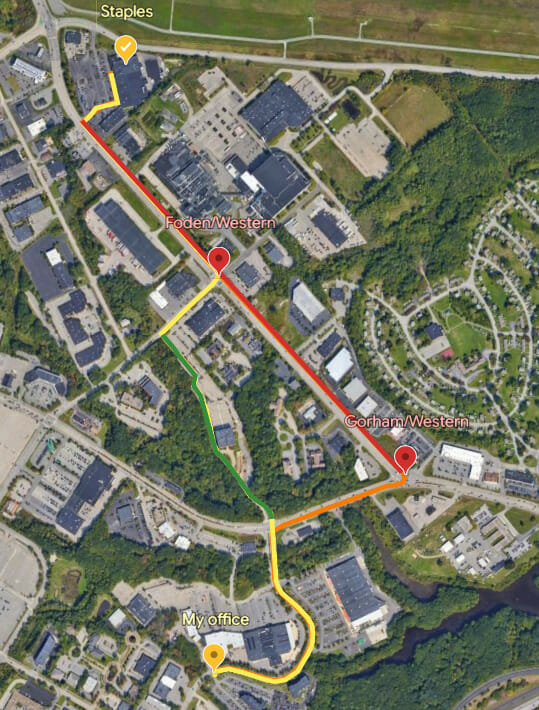
So, no brainer, let’s take the parking lot cut-through, right? (Beware that busy parking lots can often be more dangerous than roads. Traffic is less orderly and sightlines can be bad. But this parking lot serves an office building with low occupancy, so it’s usually nearly deserted.)
That’s what I usually figure. But this time, I had a different idea. Before I left, I used Google Maps satellite view to review the intersection configurations.
Riding on stroads: better?
So which route will be the more relaxing? Sure, the nearly deserted parking lot will be more relaxing than the stroad anytime. But will avoiding one intersection and minimizing time riding on stroads necessarily make for a better experience? What exactly will be the difference in experience on Western Avenue? How would you know?
Hint: Look at the intersections. Specifically, look at how traffic turns onto Western Avenue (top left) in each case.
(Jeopardy music…)
:
:
:
Give up?
Check it out:
And the winner is…?
Using the “easier” parking lot route, I enter Western Avenue on a short green light. Motorists are very likely waiting in both through lanes to my right (red arrows). Soon after I turn, when they get their green light, I’ll almost certainly have traffic behind me in my lane. That traffic will not be able to pass me right away because there will still be traffic in the left lane too.
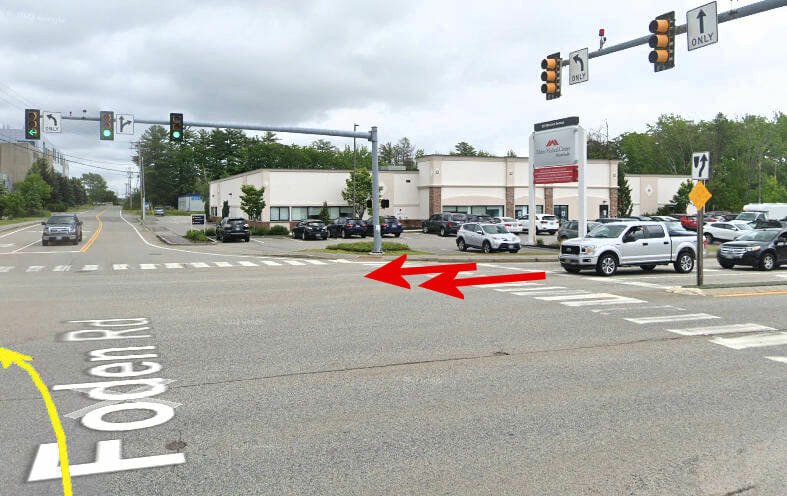
Compare this situation to turning onto Western earlier, at Gorham Road. There, traffic from any direction behind me enters in just a single lane, so the passing lane is guaranteed to be clear for a while after I turn. Motorists coming up behind me will have no problem changing lanes right away. Then, as I continue along Western, subsequent traffic from behind me also has plenty of time to see me and change lanes. Each passing driver clears the sightline for the person behind them, and so on.
Counterintuitive
Granted, I still have to go through the same Foden Road intersection. But even then, any motorist coming up behind me sees me ahead, and is likely to change to the left lane before the light, to avoid getting stuck behind me. When I take the parking lot route, turning left from Foden, drivers on Western have no idea that I am about to be ahead of them. They have no chance to avoid the delay. Then they are surprised, and sadly, in some cases, annoyed.
Counter-intuitively, the route that has me riding on stroads longer actually reduces motorists’ getting “stuck” behind me. It’s not my job to protect their emotions, but still, if I can set myself and everyone else up for an easier time, why wouldn’t I?
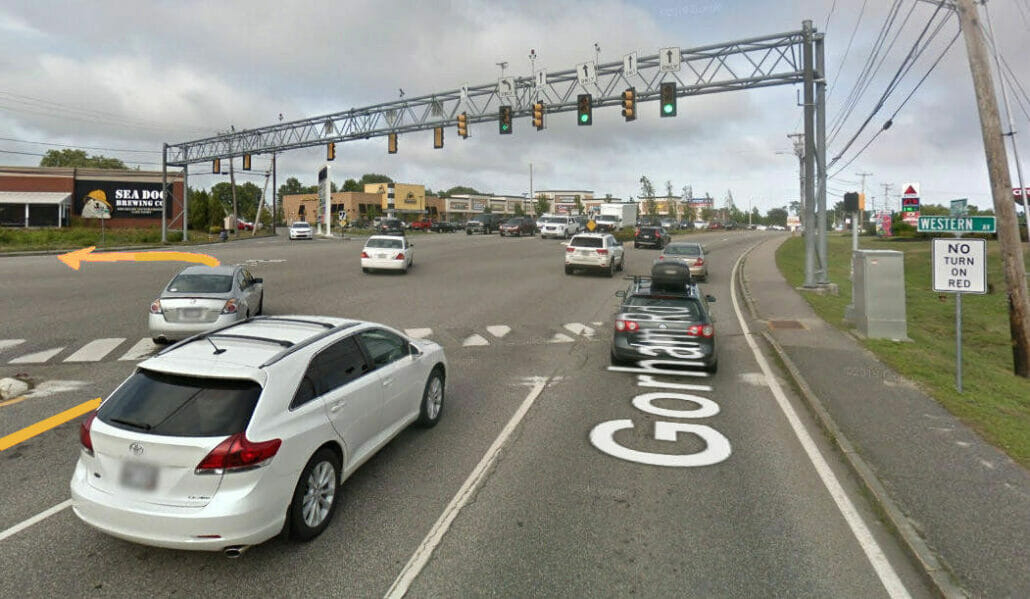
So, that day, I took the less intuitive route and spent more time on the stroad, and it was absolutely fine. I didn’t notice anyone needing to wait long, if at all, to change lanes to get around me. There was absolutely no incivility. Move along, nothing to see here. Just another day of ordinary bicycle transportation with CyclingSavvy.
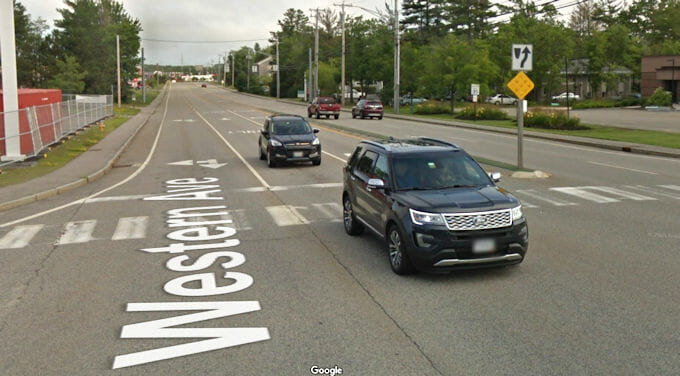
Follow us for more CyclingSavvy traffic hacks!

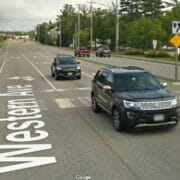

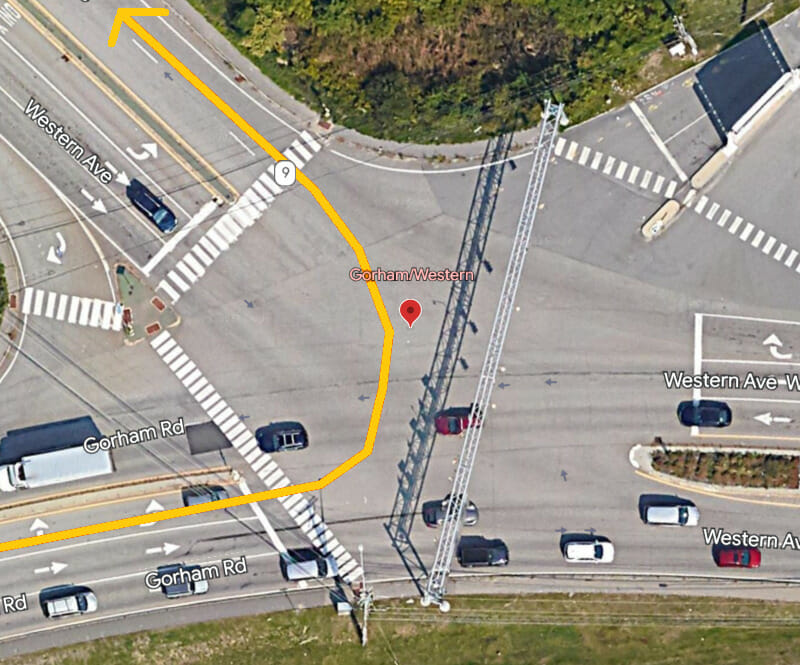
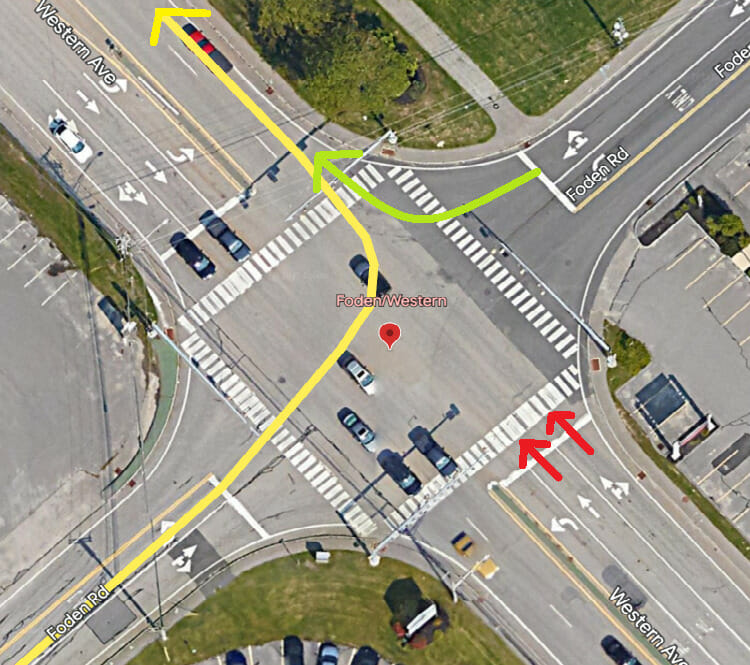
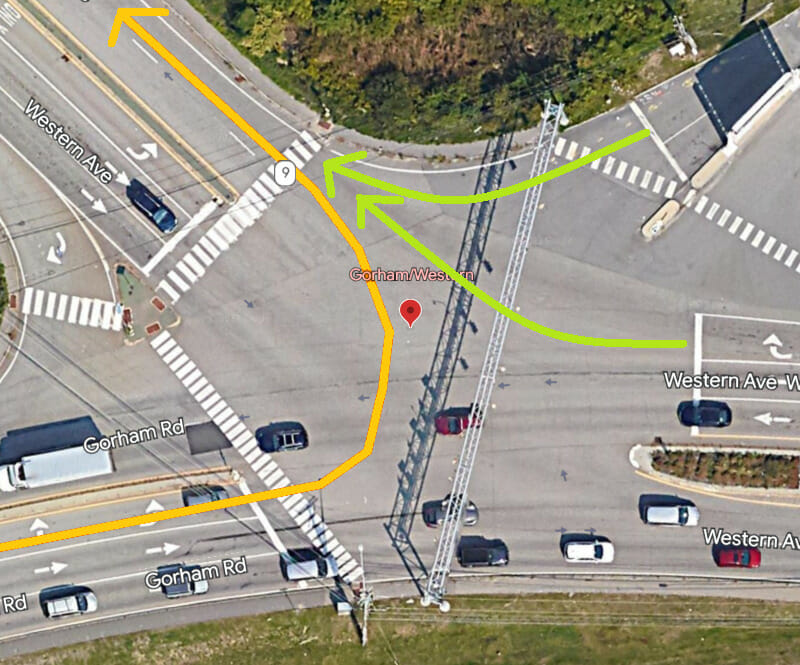



John, this is a brilliant post. Your analysis is great. Thank you.
Despite your young age, your full membership in the “Johns of Bicycling” society, complete with membership card and secret decoder ring, has been approved!
I am not worthy! 🙇🏻 😄
John, thank you for sharing this with us. It’s a great example of how reflecting on how traffic is flowing behind and around you can lead to route choices that are better for both the cyclist and motorists.
I don’t quite understand, however, how a “stroad” is different from any typical higher-speed multilane arterial road which are found all over my town called Los Angeles. Are there any such roads that are not stroads?
It is my impression that any higher-speed multilane arterial road IS a stroad. I understand that’s not an official traffic engineering term, so maybe you’d have to direct your question to Mr. Mahron.
Most of the descriptions I hear of Stroads and how they differentiate from roads is likelihood of intermediate stopping places people do along the route.
Streets: think city streets. A combination residences and varied businesses. Traffic is slow and vehicles stop or turn frequently. Lots of contention points between vehicle, pedestrian, and bicycle traffic but all parties are expecting it and negotiate them effectively.
Road: Think old post road. Its from going from one town to another at speed and there is little you want to do in between.
Stroad: Retail establishments along both sides. Traffic lights and turn lanes to let people access large parking lots, but with the large spacing between them drivers want to quickly travel past the big box stores, strip malls, and restaurants they don’t want to get to the area they do.So it has the contention points of a stop and go street but the driving distance speed of a road.
There probably isn’t a hard and fast cutoff, but an arterial road is probably less of a stroad when the contention points are minimized, the arterial aspects lead to intersections with streets and the retail and residences are off of the streets.
This is so thoughtful and helpful, John. I don’t ride any regular routes the way you do as a commuter, so it’s interesting to read how you analyze a regular route for safety improvements.
I wonder about two alternative strategies. First, have you considered your Green route to Foden & Western, then just pausing there to wait for a gap between platoons of cars? Would that help? And second, Darling Avenue might be the choice of most cyclists, with a cut-trhough to Western at the IRS. In my experience, small roads parallel to arterials are often little used and quite peaceful. I think they’re worth searching out.
Thanks for the suggestions.
The issue at Foden is that it is a cross-street with a very short green. Since I’m turning left, I have to wait for a green (unless I want to go blow the red light, which I’d be opposed to making a common practice), but the green will be short and not give me much time to get ahead of the two lanes of traffic on Western.
Darling is a somewhat quieter road, but is just 2-lane, so sometimes there is some negotiation when there is traffic in both directions. Plus it feels a little longer, though I haven’t actually measured it. It would probably be fine in many cases.
An issue I didn’t mention was the problem of triggering the left turn arrow. I have sometimes experienced this at both of these left turns, but I think that Foden, having less traffic, is more likely to leave me all alone in the left turn lane, unable to trigger the light. I know that that has happened. At the Gorham Road turn onto Western, I’m more likely to have traffic behind me to trigger it.
Traffic-signal triggering video cameras (those cylindrical objects) are visible above the signal mast at Gorham and Western. If they are working properly, they will recognize a bicyclist. At night you may need to point your headlight up at the camera which is facing you direction. Cameras are more reliable than the induction loops (metal detectors buried in the street) also use for signal detection. That the traffic signal will not always turn green for bicyclists — and motorcyclists — is a scandal. I should write an article about how to improve the odds to make them work.
John, if you do an article on loop detectors, there’s a new design around here to mention. It’s a parallelogram with a “powerhead,” and I’ve not yet seen it discussed regarding bikes. See https://www.fhwa.dot.gov/publications/research/operations/its/06108/04.cfm
BTW, I have not yet had a powerhead fail to detect my bike or my motorcycle when I’ve been over the small forward parallelogram.
Traffic-signal triggering video cameras (the more or less horizontal cylindrical objects) are visible above the signal mast at Gorham and Western, maybe also Foden and Western. If they are working properly, they will recognize a bicyclist. At night you may need to point your headlight up at the camera which is facing you. Cameras are more reliable than the induction loops (metal detectors buried in the street) also use for signal detection. That the traffic signal will not always turn green for bicyclists — and motorcyclists — is a scandal. I should write an article about how to improve the odds to make them work.
The multiple lanes of traffic thing is precisely why I have one intersection where I “jump” a red light when the opposite side gets their green arrow, since my side often doesn’t even get a straight through green due to lack of traffic, and 2 left turn lanes to my left. If I do get a green light, it’s short and then I have 2 lanes of heavy traffic behind me. If I jump through as the cross street turns red, and before the opposite side starts turning left, I can get way on down the road before the other street’s left turning traffic comes up behind me, so that it’s easier for them to change lanes.
Just one of those things that obviously isn’t the best or safest solution, but it’s what works best for me with the traffic and signal patterns we have.